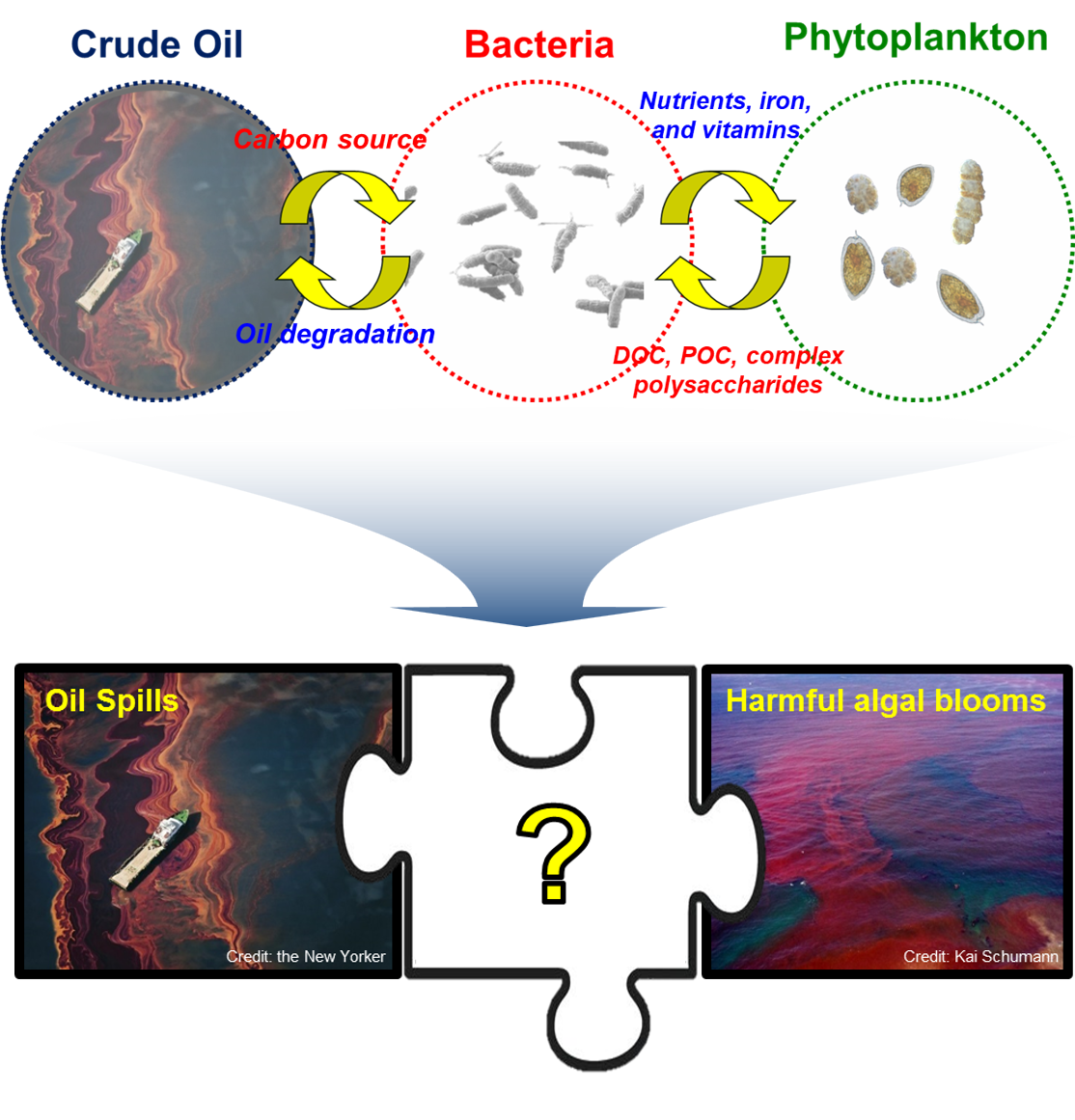Research
- HOME
- Research
Research
Can intragenic variation in toxin-producing genes lead to variations in toxin production (e.g., content and profiles)?
In the dynamic world of marine ecosystems, harmful algal blooms can negatively impact marine ecosystems and human health. These harmful algal blooms occur due to various physical, chemical, and biological factors, with the algae demonstrating physiological variability and diverse toxin production capabilities depending on these factors. To study this physiological variability and toxin production, we are currently analyzing the genetic diversity of the sxtA4 gene. Ongoing research into the relationship between genetic diversity and toxin production will contribute to a deeper understanding of the adaptive strategies and ecological impacts of harmful algal blooms.

Phylosymbiosis: How does the bacterial community affect the evolution of microalgae?
Microalgae and bacteria has a close relationship in the aquatic ecosystem. Interactions between phytoplankton and bacteria can range from the reciprocal exchange of resources required for growth to competition for limiting inorganic nutrients. According to recent studies, the chemical interactions between bacteria and microalgae do not appear to be uniform (Nef et al., 2022; Sultana et al., 2023). It has been reported that host specificity of the microbiome related to microalgae exists, and it is known that these host-specific microbiomes contribute to the maintenance of the host’s fitness. Therefore, understanding the host specificity of microbiomes can provide essential foundational knowledge for comprehending the ecology of microalgae and bacteria.

Can oil-degrading activity from bacterial communities promote the growth of harmful algae, leading to Harmful Algal Blooms (HABs)?
The mechanisms of harmful algal blooms(HABs), which are economically and ecologically damaging, can be categorized into physical, chemical and biological factors. At the biological factor, in the aquatic ecosystem, microalgae has a close relationship with bacteria. According recently studies, a number of symbiotic bacteria have been identified that are significantly positive correlated with HABs formation (Croft et al. 2005; Buchan et al. 2014; Park et al. 2015; Yang et al. 2016). Therefore, by studying the effects of oil-degrading bacteria to growth of microalgae, we hope to shed new sight on the mechanisms of HABs.

Endosymbiosis: the role of endosymbiotic bacteria in microalgae.
Although many microalgae growth-promoting bacteria have been reported, there are limitations in directly observing them. To overcome these limitations, if we can identify growth-promoting bacterial strains that live symbiotically within microalgae using a confocal microscope, it could serve as a new biological resource to overcome the aforementioned challenges.


